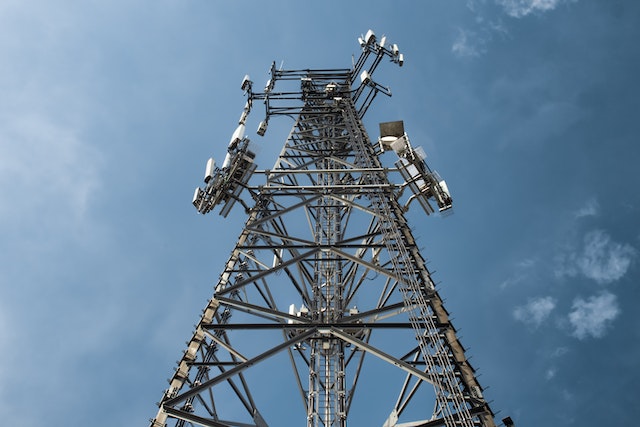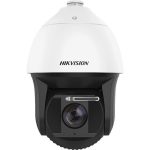WiFi technology allows wireless devices such as laptops, smartphones, tablets, and other IoT devices to communicate and access the internet without the need for physical wired connections. To facilitate this communication, WiFi operates on specific frequency bands, which are subdivided into channels. WiFi channels are like lanes on a highway, allowing multiple devices to communicate simultaneously without interfering with each other.
WiFi technology has evolved over time, with multiple standards being introduced, such as IEEE 802.11a, 802.11b, 802.11g, 802.11n, 802.11ac, and 802.11ax (also known as WiFi 6). These standards differ in terms of the frequency bands they use, the number of channels available, and the data transfer rates they can achieve.
Frequency Bands
There are two primary frequency bands used in WiFi communication: 2.4 GHz and 5 GHz. The 2.4 GHz band is the older and more widely used band, while the 5 GHz band is a more recent addition that offers higher data transfer rates and less congestion. Each of these frequency bands is divided into multiple channels, with the channels in the 2.4 GHz band being narrower and more prone to interference, while the 5 GHz band offers a greater number of non-overlapping channels and less congestion.
2.4 GHz Band:
The 2.4 GHz band has a total of 14 channels, but not all of them are available or used in every country due to regulatory restrictions. In the United States, for example, only channels 1 through 11 are allowed for use. The channels in the 2.4 GHz band are spaced 5 MHz apart, with each channel having a width of 22 MHz. However, due to this close spacing, there is significant overlap between adjacent channels, which can lead to interference and reduced network performance.
In the 2.4 GHz band, only channels 1, 6, and 11 are non-overlapping, making them the preferred channels for WiFi networks to minimize interference. However, this limited number of non-overlapping channels also makes the 2.4 GHz band more congested, especially in urban areas where there are many WiFi networks and other devices operating on the same frequency range.
5 GHz Band:
The 5 GHz band offers a larger number of non-overlapping channels (up to 25 in the United States), making it less congested and better suited for high-speed data transfer. The channels in the 5 GHz band are spaced 20 MHz apart, with each channel having a width of 20 MHz. This wider spacing between channels reduces the chances of interference and allows for more simultaneous connections.
Channel Width
Channel width refers to the range of frequencies occupied by a WiFi channel. A wider channel width allows for more data to be transmitted simultaneously, resulting in higher data transfer rates. However, wider channels also consume more of the available frequency spectrum, which can lead to increased interference, especially in the 2.4 GHz band.
There are three common channel widths used in WiFi networks:
- 20 MHz: This is the standard channel width for most WiFi networks, both in the 2.4 GHz and 5 GHz bands. A 20 MHz channel width provides a balance between data transfer rates and the potential for interference. In the 2.4 GHz band, using a 20 MHz channel width is essential to minimize interference between adjacent channels.
- 40 MHz: This channel width is available in both the 2.4 GHz and 5 GHz bands. Using a 40 MHz channel width can result in higher data transfer rates compared to a 20 MHz channel, but at the cost of increased potential for interference, especially in the 2.4 GHz band. In the 5 GHz band, the increased number of non-overlapping channels makes it more feasible to use 40 MHz channel widths without causing significant interference. However, some older devices may not support 40 MHz channel widths, so compatibility should be considered when choosing this option.
- 80 MHz and 160 MHz: These channel widths are used exclusively in the 5 GHz band and are supported by more recent WiFi standards, such as 802.11ac and 802.11ax (WiFi 6). These wider channels provide even faster data transfer rates and are ideal for applications that require high bandwidth, such as video streaming, online gaming, and large file transfers. However, not all devices may support these wider channels, and using them consumes more of the available frequency spectrum. It is essential to check your device specifications and choose the most suitable channel width based on your needs and the capabilities of your devices.
Choosing the Best WiFi Channel
Selecting the right WiFi channel can have a significant impact on your network’s performance, as it affects the potential for interference, data transfer rates, and the number of devices that can connect simultaneously. When choosing the best wireless channel for your WiFi, consider the following factors:
- Interference: To minimize interference from other networks and devices, choose non-overlapping channels. In the 2.4 GHz band, this means using channels 1, 6, or 11. In the 5 GHz band, there are more non-overlapping channels available, making it less congested and easier to find a suitable channel.
- Signal strength and range: Higher frequency channels, such as those in the 5 GHz band, offer faster data transfer rates but have a shorter range compared to lower frequency channels in the 2.4 GHz band. If range is a priority for your network, using the 2.4 GHz band with a 20 MHz channel width may be the best option. However, if speed and minimal interference are more important, consider using the 5 GHz band with a wider channel width.
- Device compatibility: Ensure that your devices are compatible with the chosen channel and frequency band. Older devices may not support the 5 GHz band or wider channel widths, such as 40 MHz, 80 MHz, or 160 MHz. Check your device specifications and choose a channel and frequency band that best suits the capabilities of your devices.
- Environment: The physical environment in which your WiFi network operates can also affect channel performance. Dense urban areas with many neighboring WiFi networks and electronic devices may require more careful channel selection to avoid interference. In rural or suburban areas with fewer neighboring networks, interference may be less of a concern.
- Channel scanning and auto-selection: Many modern routers have built-in channel scanning and auto-selection features that can automatically select the best channel based on the current environment and interference levels. While this can be a convenient option, it’s essential to periodically check your network’s performance and adjust the channel settings manually if necessary.
Selecting the best WiFi channel for your network involves considering factors such as interference, signal strength, range, device compatibility, and the physical environment. For the best performance in the 5 GHz band, using channels with 80 MHz or 160 MHz widths is recommended, as they provide the highest data transfer rates. However, be aware that not all devices may support these wider channels. Check your device specifications and choose the most suitable channel width based on your needs and the capabilities of your devices.





